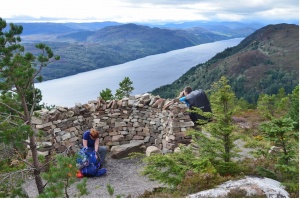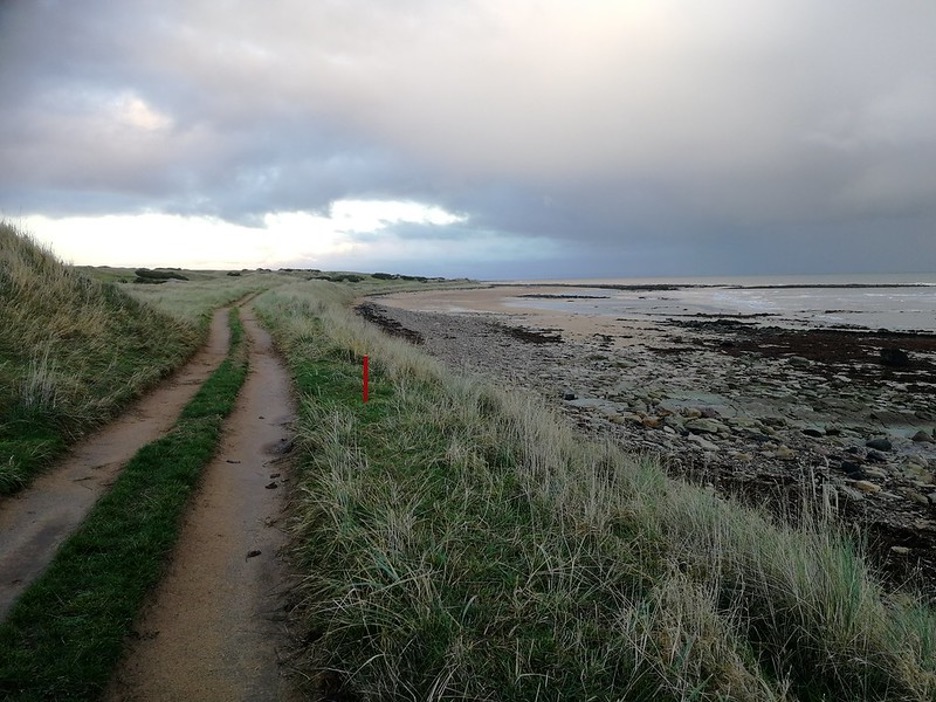Top 8 Destinations for Walking Holidays in Scotland: Your Ultimate Guide

Scotland, known for its remarkable landscapes, extensive history, and warm hospitality, has become an ultimate destination for walking holidays. The allure of venturing through the diverse Scottish countryside, from serene lowlands to rugged mountains, isn’t just about the panoramic views—it’s also about experiencing Scotland’s rich cultural heritage up close. With walking trails catering to an array of fitness levels, including the picturesque routes offered by companies like Mickledore, everyone can find their own slice of Scottish paradise.
The Charm of Scotland for Walkers:
What sets Scotland apart as a phenomenal walking destination is its stunning combination of natural beauty and layered history. The country’s landscapes are not just a feast for the eyes, they’re a tapestry of geologic evolution—lush glens shaped by ancient glaciers, towering mountains birthed from periods of volcanic activity, expansive lochs birthed from the tectonic divergence.
Even beyond these enchanting sceneries, Scotland’s cultural richness offers an added charm. Each trail transcends just physical exercise; they are routes that take walkers along ancient paths locals have trodden for centuries. A Scottish walking holiday is thus more than just a recreational break—it provides a wonderful bridge to Scotland’s storied past.
The allure of walking holidays lies in the immersive experience they offer. In contrast to rapid sightseeing from behind a vehicle’s window, walking allows a more measured, intimate exploration of the surroundings. Every scent of Highland heather, every sound of native bird songs, and every chance encounter with local flora and fauna becomes part of the personal journey.
Planning Your Walking Holiday in Scotland:
A careful selection of the appropriate trail matching your interest and ability can enhance your walking holiday significantly. Trails in Scotland vary from short, gentle lowland footpaths to more strenuous mountain hikes in the Highlands. Assess your comfort level with different terrains and distances to ensure an enjoyable journey.
Scotland is a year-round walking destination; however, the seasons do present varied experiences. Spring unveils a scene of blooming heather and birthing lambs, while autumn sets the woodland ablaze with vibrant colours. Summer allows for longer daylight hours, ideal for extended walks, whereas winter offers a quiet, serene beauty, tinged with tranquil snowscapes.
A well-packed rucksack is crucial for a successful walking holiday. The essentials include sturdy walking shoes, waterproof clothing (even in summer, as Scottish weather can be unpredictable), a reliable map, bottled water, and high-energy snacks. Including a basic first-aid kit is always a good idea.
As you embark on your walking holiday in Scotland, you aren’t merely setting onto a trail; you’re stepping into a living tapestry of varied landscapes, abundant wildlife, and rich folklore. It’s an adventure waiting to unfold at your own pace and in your own unique way.
Walking Holiday in Scotland: Top 8 Walking Destinations
Scotland is a paradise for walkers, offering a rich tapestry of landscapes, from serene coastlines and historic ruins to majestic lochs and rugged highlands. Here are details on three of the top walking destinations perfect for both avid hikers and casual strollers looking for scenic beauty and cultural heritage.
1. Borders Abbeys Way:
Summary of the Route
● The Borders Abbeys Way encapsulates peaceful riverside walks, embracing the bucolic charm of the Scottish Borders.
● Wander through a landscape punctuated with the romantic ruins of ancient abbeys, a testament to the region’s rich monastic history.
Historical Significance
● The pathway traverses the heartland of Scottish monasticism, connecting the historic abbeys of Melrose, Dryburgh, Kelso, and Jedburgh. These sites offer a glimpse into Scotland’s medieval past.
Accommodation Options and Duration
● Accommodations include welcoming bed and breakfasts, guest houses, and inns.
● The route is approximately 68 miles long and typically takes 5-7 days to complete, allowing for leisurely exploration.

2. Fife Coastal Path:
Coastal Landscapes and Wildlife
● From the iconic Forth Road and Rail Bridges to the picturesque estuaries of the River Tay, the path reveals a blend of engineering marvels and pristine nature.
● The trail is a haven for birdwatchers, with seabirds, eiders, and puffins among the species spotted along the coast.
Notable Landmarks
● Historic landmarks, including the ancient university town of St Andrews, and the quaint fishing villages of the East Neuk, add cultural depth to the natural beauty.
Journey Duration and What to Expect
● Expect to take about 7-10 days to traverse the approximately 117-mile route, which is marked by clear signage.
● Terrain varies from sandy beaches to rocky shores, offering moderate walks with stunning views.
3. Great Glen Way:
Cross-Country Trail Overview
● The Great Glen Way runs from Fort William to Inverness, following the Great Glen Fault line. The route is filled with dramatic highland landscapes and serene waterside paths.
● This trail is unique in offering walkers the chance to follow canal towpaths and paths beside iconic Scottish lochs, including Loch Ness.
Sights Along the Way
● Notable sights include the mysterious waters of Loch Ness, home to the legendary Nessie, and the ruins of Urquhart Castle, offering a peek into Scotland’s tumultuous history.
Trail Grade and Nightly Stops
● Graded as easy to moderate, most stretches of the Great Glen Way are accessible to walkers of all abilities.
● Planned stops are available in friendly villages and towns, offering a range of accommodations from hostels to hotels, with the whole route taking approximately 5-6 days to complete.
4. John Muir Way:
Walk Blend
● The John Muir Way is a unique blend of coastal, urban and countryside trails that extend across Central Scotland.
● From sandy beaches to bustling towns and peaceful country lanes, this trail offers a taste of diverse Scottish landscapes.
Cultural Experiences
● The trail offers a cultural feast; from the historical Edinburgh, showcasing its splendid castle and vibrant city life, to the lesser known gems like Linlithgow Palace.
● Taking this walk is like stepping into different chapters of Scotland’s rich history and modern culture.
Trail Length and Grade
● The trail stretches across 134 miles and typically takes 9-11 days to walk.
● With an easy to moderate gradient, this route is adaptable for novices and seasoned walkers alike.
5. Rob Roy Way:
Historical Footsteps
● The Rob Roy Way lets you follow in the footsteps of one of Scotland’s most famous folk heroes, Rob Roy MacGregor.
● This route is steeped in history, echoing tales of his daring escapades.
Scenery and Wildlife
● The trail boasts dramatic mountain vistas, rolling hills and tranquil lochs.
● Wildlife encounters can include sightings of red deer, golden eagles, and if you’re lucky, perhaps a Scottish wildcat.
Trail Difficulties and Daily Mileage
● The trail spans 79 miles, often completed over a comfortable 6-7 days.
● It intermixes easy valley floors with challenging mountainous terrain, making it a moderately difficult but rewarding trail.
6. Speyside Way:
Journey Overview
● The Speyside Way carries you from the majestic northeast coast into the heart of the Scottish Highlands, home to the scenic Cairngorms.
● There’s something for everyone on this trail, from serene river walks to stunning forest trails.
Whisky Distilleries
● As you ramble along, look forward to whisky tastings at some of the famous distilleries that dot the region, a treat for the senses and the palette.
Trail Challenges and Length
● Covering around 84 miles, the journey typically takes about 6-7 days to complete.
● From tranquil flat river valleys to challenging hill climbs, the trail presents variable difficulties.
7. St Cuthbert’s Way:
Tranquil Countryside & Coastal Scenery
● St Cuthbert’s Way offers a delightful fusion of pastoral tranquility and magnificent coastal landscapes. It takes you from Melrose in the Scottish Borders, across to the beautiful coastal village of Lindisfarne in Northumberland, in England.
Historical Context
● The route is historically significant, following the journey that St. Cuthbert, one of Scotland’s most important saints, is believed to have taken in the 7th Century.
● The path presents opportunities to immerse yourself in the region’s rich medieval tradition, dotted with ruins, churches, and sights intimately related to St Cuthbert’s life.
Trail Sections & Accommodation
● The route spans 62.5 miles and is typically walked over 4-6 days, offering suitable stopping points for nightly accommodation.
● Beautiful rural guesthouses and cozy bed & breakfasts along the way offer restful nights after a day full of exploration.
8. West Highland Way:
Highland Landscapes
● The West Highland Way offers the quintessential Scottish Highland experience, weaving through a canvas of classic Highland landscapes ranging from lowland moors to steep mountain terrain and scenic lochs.
Popular Attractions
● The pathway captivates walkers by including some of Scotland’s most renowned natural wonders like Ben Nevis, the highest peak in the UK, and the stark beauty of Glencoe, a deep valley flanked by towering mountains.
Trail Grading & Length
● The trail, graded as moderate to difficult, entices walkers with its 96-mile length typically traversed over 7-8 days.
● Walking the West Highland Way is a rewarding experience, but requires proper preparation due to varied terrains and potential for rapidly changing weather conditions.
Accommodations and Amenities
Types of Lodgings Available on These Walking Trails
● Bed & Breakfasts (B&Bs): Experience local hospitality.
● Hostels: Budget-friendly with communal spaces.
● Inns: Often located in rural settings with meals available.
● Self-Catering Cottages: Ideal for groups wanting privacy.
Booking in Advance
● Peak Seasons: Typically May to September. Book early to secure your spot.
● Availability: Smaller establishments may fill quickly, so plan ahead.
Amenities Tailored for Walkers
● Drying Rooms: For wet clothing and boots.
● Luggage Transfer: Available through many services, easing daily hikes.
● Local Advice: Hosts often provide valuable insights into weather and trails.
Safety and Navigation
The Importance of Being Prepared for Sudden Weather Changes
● Scotland’s weather can be unpredictable. Always carry:
○ Waterproof clothing.
○ Extra layers for warmth.
○ Sun protection for rare, sunny days.
Guided Walks Versus Self-Guided Options
● Guided Walks: Offer the benefit of a knowledgeable guide and group camaraderie.
● Self-Guided: For those seeking solitude. Routes and accommodations are often pre-booked for you.
Navigation Tools and Resources
● Maps: Always carry a physical map of your route.
● GPS Devices: Useful for remote areas where mobile signals are weak.
● Marked Trails: Most popular routes are well marked, but having a map is crucial.
Conclusion
Scotland’s rich historical tapestry, combined with its natural beauty, makes it a unique destination for walking enthusiasts. From the mystical Isle of Skye to the rugged beauty of the Highlands, Scotland caters to every taste and ability.
With a wide range of trails, accommodations, and landscapes, Scotland offers a cornucopia of choices for walkers. Whether you’re in search of solitude, adventure, or cultural experiences, Scotland’s paths are ready to explore.
A walking holiday in Scotland is more than just a journey through stunning landscapes; it’s an opportunity to challenge oneself, find peace, and connect with nature and history. With the right preparation and respect for the natural environment, it promises to be an adventure that will enrich your soul and leave you with lasting memories.

